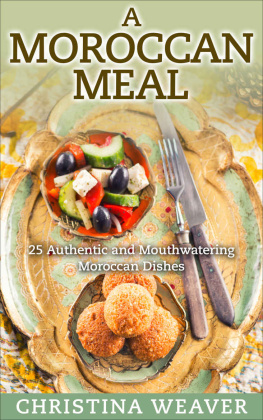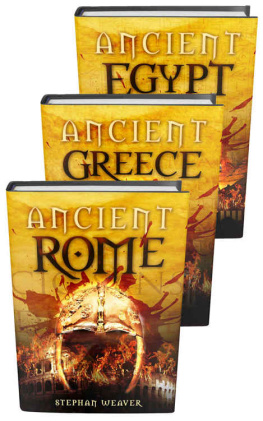William Woys Weaver - 100 Vegetables and Where They Came from
Here you can read online William Woys Weaver - 100 Vegetables and Where They Came from full text of the book (entire story) in english for free. Download pdf and epub, get meaning, cover and reviews about this ebook. year: 2013, publisher: Algonquin Books, genre: Detective and thriller. Description of the work, (preface) as well as reviews are available. Best literature library LitArk.com created for fans of good reading and offers a wide selection of genres:
Romance novel
Science fiction
Adventure
Detective
Science
History
Home and family
Prose
Art
Politics
Computer
Non-fiction
Religion
Business
Children
Humor
Choose a favorite category and find really read worthwhile books. Enjoy immersion in the world of imagination, feel the emotions of the characters or learn something new for yourself, make an fascinating discovery.

- Book:100 Vegetables and Where They Came from
- Author:
- Publisher:Algonquin Books
- Genre:
- Year:2013
- Rating:4 / 5
- Favourites:Add to favourites
- Your mark:
- 80
- 1
- 2
- 3
- 4
- 5
100 Vegetables and Where They Came from: summary, description and annotation
We offer to read an annotation, description, summary or preface (depends on what the author of the book "100 Vegetables and Where They Came from" wrote himself). If you haven't found the necessary information about the book — write in the comments, we will try to find it.
100 Vegetables and Where They Came from — read online for free the complete book (whole text) full work
Below is the text of the book, divided by pages. System saving the place of the last page read, allows you to conveniently read the book "100 Vegetables and Where They Came from" online for free, without having to search again every time where you left off. Put a bookmark, and you can go to the page where you finished reading at any time.
Font size:
Interval:
Bookmark:
100 VEGETABLES
and Where They Came From
ALSO BY WILLIAM WOYS WEAVER
A Quaker Womans Cookbook
Sauerkraut Yankees
The Larder Invaded
America Eats
The Christmas Cook
Pennsylvania Dutch Country Cooking
Heirloom Vegetable Gardening
Food and Drink in Medieval Poland
(with Maria Dembinska)
Sauers Herbal Cures
and Where They Came From
WILLIAM WOYS WEAVER
Illustrated by Signe Sundberg-Hall


ALGONQUIN BOOKS OF CHAPEL HILL
Published by
ALGONQUIN BOOKS OF CHAPEL HILL
POST OFFICE BOX 2225
CHAPEL HILL, NORTH CAROLINA 27515-2225
a division of
WORKMAN PUBLISHING
225 VARICK STREET
NEW YORK, NEW YORK 10014
2000 by William Woys Weaver. Illustrations 2000 by Signe Sundberg-Hall. All rights reserved.
Library of Congress Cataloging-in-Publication Data is available.
eISBN 978-1-56512-686-2
For Valerie on this side of the Atlantic,
and for Ulrike and John, who have
privileged me with their friendship

W hen I pile the vegetables from my garden on the kitchen table, I am reminded of the extraordinary culinary heritage weve received from the past. The vegetables I grow are called heirloom, or heritage, vegetables, since they have been handed down from one generation to the next: the Cardon de Tours, a cardoon raised by Thomas Jefferson; the Ethiopian yellow lentil grown by farmers for thousands of years; the Lancaster Lad pea, which was developed in England during the early 1900s. All of these are delightful old cultivars with flavors that evoke their fascinating histories.
Yet the process of creating heirlooms never really stops. The newer open-pollinated varieties of vegetables, like the Green Grape tomato of the 1980s, promise a future of extraordinary culinary riches that anyone can grow and reproduce in their own backyards. The vegetable world is changing quickly, but there is a core of classics that represents the best of what has been: the Jaune du Poitou leek, the Arran Victory potato, the zucchini called Cocozella di Napoli, just to name a few. These are the plants whose personalities inhabit my garden, a garden with a special voice and mission. That mission is woven into the fabric of this book, for this is both a narrative about originswhere things come fromas well as a sampling of the vast array of tastes and aromas that make the world of vegetables so richly enticing.
My kitchen garden is situated in Pennsylvania on the site of an old property called Roughwood, an appellation it acquired in the nineteenth century. The Roughwood Seed Collection is the three thousand or so vegetables I grow on a rotating basis to explore and examine firsthand the vegetable heritage of many parts of the world. All of the vegetables discussed in the following pages have been raised in this garden. Each one of them is part of the Roughwood story, and each one has brought to the garden its own unique narrative about the cuisines and cultures of far off places. People sometimes ask me where I live and I tell them I am six hours and twenty minutes from Londonfor it takes just as long to fly to London from nearby Philadelphia as it does to drive to Boston from my house. For me, the world is indeed a very small place and the sampling of vegetables I have chosen for this book reflects my worldview: there are selections from every continent, except the frozen one.
The idea of limiting my choice to just one hundred vegetables was a difficult charge, since even the culls in my collection have merit. Yet I do have my favorites and for reasons not necessarily culinary. Take, for example, two rather unremarkable looking tomatoes of great rarity: Old Moyamensing (also known as the Fairmount Goal) grown by Philadelphia prisoners in the 1830s, and the tomate pomme rouge from the physic garden of the University of Montpellier in France. That Old Moyamensing was once prisoners food opens a whole chapter of social history about prison gardens and the kinds of foods convicts grew for their own consumption. In the case of the French tomato, it was discussed and illustrated in the 1813 treatise on solanums by Michel Dunal, one of the great French botanists of the nineteenth century. The prison tomato is a rustic gem; the other one is a great prize and doubtless similar to the sort of seedy tomatoes grown in America by enlightened gardeners like Thomas Jefferson or eighteenth-century plant collector William Hamilton of Philadelphia.
I suppose the lesson in this is that to understand the vegetable varieties that have been entrusted to us by past generations, as well as those that are being created for us today, we must look at the sum total of their biodiversitythe good, the middling, the less important, and the truly great. They all fit together when viewed holistically, for it is this sum total of those small pieces that makes the planet Earth tick.
In the following pages I tell the tales of other favorites, such as the Spotted Aleppo lettuce, which took me twenty years to find; the Alma pea recently sent from Sweden; the Chioggia sea pumpkin I first tasted in Venice as an architecture student; and the charming variegated winter cress from my friend Ulrikes garden in Kent, England. Lest my readers who like to garden fret that such things cannot be found in popular seed catalogs, the seed companies listed at the end of the book carry most if not all of the vegetables discussed.
Of course, aside from their historical or gardening interest, all the vegetables chosen for this book also possess culinary merit. Indeed, I have picked out ones that soar above the run of the mill in terms of flavor and appearance. You might say that this is a garden book for cooks, or a cooks guide to the garden, because the flavor principle is a dimension of nearly every sketch and to me a very important one. Assisting me in my culinary evaluations were my friends Ulrike Paradine and John Reed. Their cozy Edwardian house in Hythe, England, with its cats and bowers of kiwi fruit, rare breeds of ducks and chickens, fish ponds, splashing fountains, grape arbors, and bed after bed of unusual vegetables and herbs, is a hidden paradise with a magic fairylike atmosphere. There, high above the English Channel, we spent many hours discussing the flavors and virtues of the one hundred vegetables included in this book.
Plants sometimes undergo alterations when they are moved to or from the New World. Intensities of flavor change dramatically with soil types or quality of sunlight. The sunlight in my garden is nearly the same as that in Madrid, Spain, which is a far cry from the soft light and mild, misty atmosphere of southern England. Thus, over the years, I have recruited the good advice of another culinary friend, Valerie Andrews, who has spent endless hours in my gardens at Roughwood tasting, commenting, and matching flavors with wine. Just to reassure ourselves that my taste impressions were on target, we cooked with these hundred vegetables many times to test and retest their strengths and weaknesses. Valerie has also kept up the French conversation and flowing wines on my terrace, where a large fig tree and pots of flowering lemons, blood oranges, limequats, key limes, and even a citron called Hand of Buddha provide my friends with endless hours of pleasant culinary inspiration. But the core of our talk surrounds vegetables. Before my guests eat, there is always a tour of the garden, wine glass in hand. The labels by each vegetable provide their names; I tell their stories.
Next pageFont size:
Interval:
Bookmark:
Similar books «100 Vegetables and Where They Came from»
Look at similar books to 100 Vegetables and Where They Came from. We have selected literature similar in name and meaning in the hope of providing readers with more options to find new, interesting, not yet read works.
Discussion, reviews of the book 100 Vegetables and Where They Came from and just readers' own opinions. Leave your comments, write what you think about the work, its meaning or the main characters. Specify what exactly you liked and what you didn't like, and why you think so.









